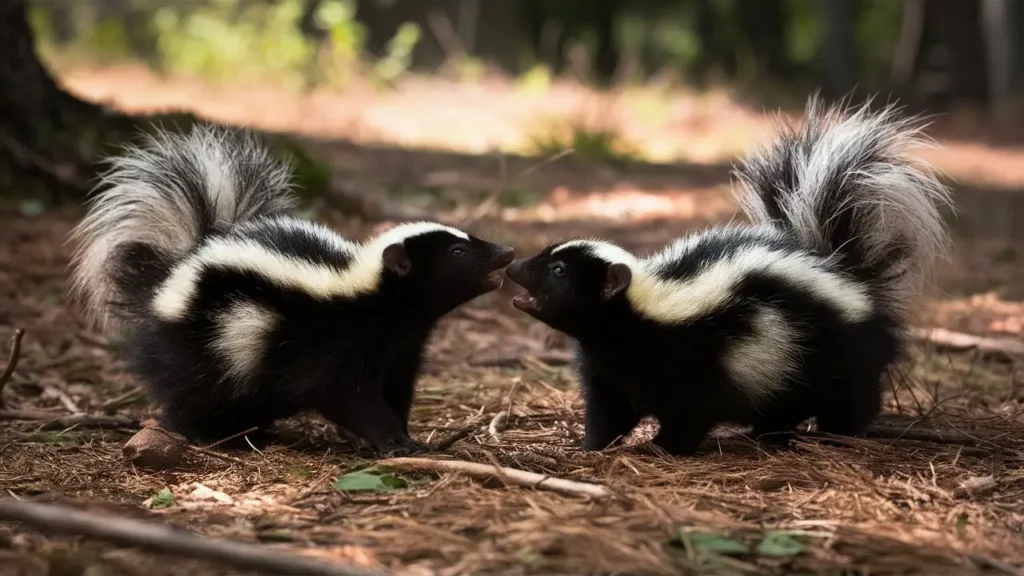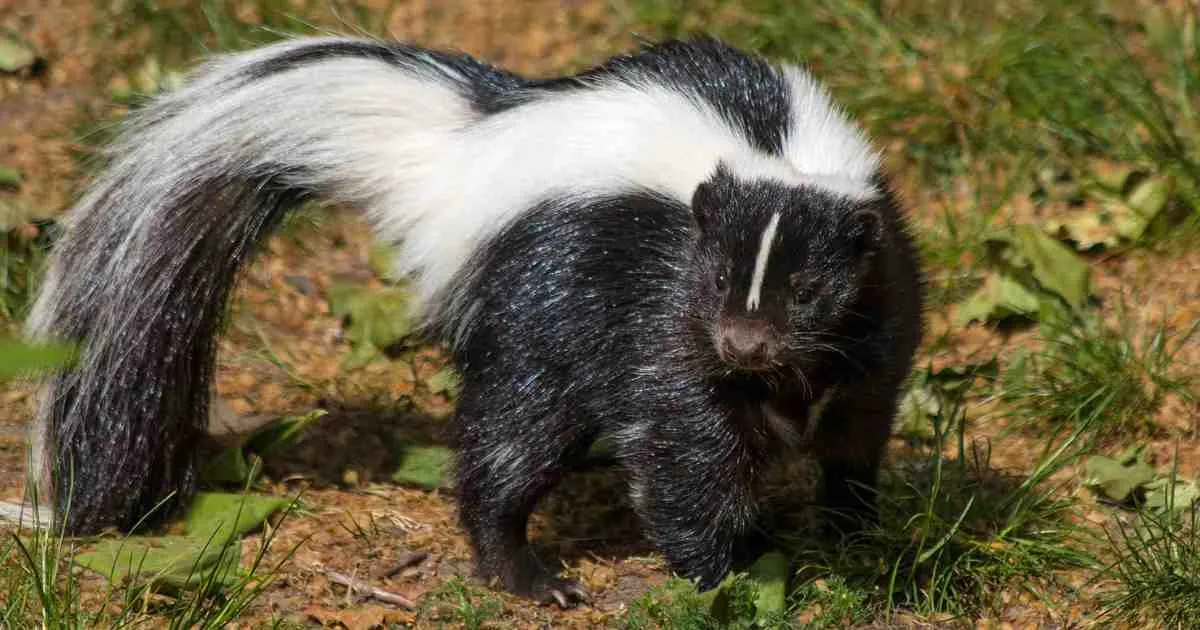Striped Skunks (Mephitis mephitis): A Complete Overview
Last updated on December 6th, 2024 at 11:30 pm
The striped skunk is one of North America’s most iconic mammals, instantly recognizable by its bold black-and-white fur and its notorious ability to spray a foul-smelling liquid when threatened. But beyond their pungent reputation, striped skunks are intriguing animals with complex behaviors, varied diets, and essential roles in their ecosystems.
Physical Characteristics and Identification
Appearance:
Striped skunks have glossy black fur interrupted by a distinctive pattern of white stripes that begin at the head and usually run down the back. Adults typically measure up to 32 inches in length (including the tail) and weigh between 2.5 and 14 pounds. Their short, sturdy legs and powerful claws are well-adapted for digging, and their long, bushy tails add both balance and visual appeal.
Senses:
While skunks have excellent senses of smell and hearing, their vision is poor, limiting their clarity of sight to about 10 feet.

Habitat and Distribution
Range:
Striped skunks are widely distributed across the United States, southern Canada, and northern Mexico. They thrive in a variety of habitats, including forest edges, grasslands, agricultural fields, and even suburban neighborhoods.
Shelter:
Dens are often located in burrows abandoned by other animals, hollow logs, or under decks and sheds. These accessible shelters provide protection from predators and harsh weather conditions.
Behavior and Lifestyle
Nocturnal Habits:
Primarily active at night, striped skunks forage for food under the cover of darkness. This nocturnal schedule helps them avoid many daytime predators.
Social Structure:
While generally solitary, striped skunks may share dens during the colder months to conserve warmth. Outside of mating season, they usually roam alone. Interactions are primarily driven by feeding or mating opportunities.
Defense Mechanisms:
When threatened, a skunk’s first line of defense is a series of warning signs, including hissing, stomping, and raising its tail. If these signals are ignored, it can accurately spray a noxious musk up to 10 feet away. This spray can deter even the most determined predators.

Physical Characteristics
Striped skDiet and Feeding Behavior
Omnivorous Diet:
Striped skunks are flexible, opportunistic feeders. Their diet includes:
- Insects: Beetles, grasshoppers, and larvae provide protein-rich meals.
- Small Mammals: Mice and voles are occasionally on the menu.
- Fruits and Berries: Seasonal fruits and berries supplement their diet with essential nutrients.
- Bird Eggs and Amphibians: When available, eggs, frogs, and other small vertebrates add variety.
Ecological Role:
By consuming insects and rodents, striped skunks help control pest populations. Their scavenging of carrion and leftover materials can also assist in cleaning the environment.
Life Cycle and Reproduction
Mating and Gestation:
Mating occurs in late winter or early spring. Females undergo a gestation period of about 60 to 75 days before giving birth to a litter of kits (often 4–7).
Raising the Young:
Newborn kits are blind and rely entirely on their mother’s care. Within 8 weeks, they are weaned and start exploring outside the den. By autumn, they are ready to venture out on their own.
Seasonal Activity and Torpor
Winter Behavior:
Although they do not truly hibernate, striped skunks enter a state of torpor during the coldest months. Their metabolism slows, and they remain in their dens, sometimes sharing space with other skunks for warmth.
Relationship with Humans
Benefits:
Skunks help farmers and gardeners by controlling insect and rodent pests. Observing skunks from a distance can be a pleasant reminder of local wildlife diversity.
Challenges:
When skunks approach human dwellings in search of food, conflicts may arise. Secure garbage cans and remove easily accessible food sources to discourage them from settling nearby. If a skunk is found living under a deck or porch, professional, humane wildlife removal is recommended.
Public Health Note:
Skunks can carry rabies, so it’s important to avoid direct contact. Vaccinating pets and keeping a respectful distance helps ensure safety.
Frequently Asked Questions
Q: Are striped skunks nocturnal?
A: Yes, striped skunks are primarily nocturnal. They forage at night, reducing encounters with predators and humans.
Q: What is the scientific name of the striped skunk?
A: The striped skunk’s scientific name is Mephitis mephitis, which references the foul odor it can produce.
Q: Do striped skunks eat squirrels?
A: Striped skunks rarely target squirrels. While they are opportunistic feeders, their diet leans more toward insects, small rodents, fruits, and eggs.
Fun Facts
- A skunk’s spray can reach targets up to 10 feet away with impressive accuracy.
- Skunks have a partial immunity to snake venom, allowing them to prey on venomous snakes.
- Even though they don’t hibernate, they slow their activity in winter and remain mostly den-bound.
- Their excellent sense of smell makes up for their poor eyesight.
Conclusion
Striped skunks, often misunderstood due to their odorous defense, play a vital role in managing insect and rodent populations. Their nocturnal lifestyle, flexible diet, and adaptability allow them to flourish in varied landscapes, from quiet woodlands to bustling suburban neighborhoods. By appreciating their ecological contributions and respecting their space, we can coexist peacefully with these unique, black-and-white mammals.
o1

